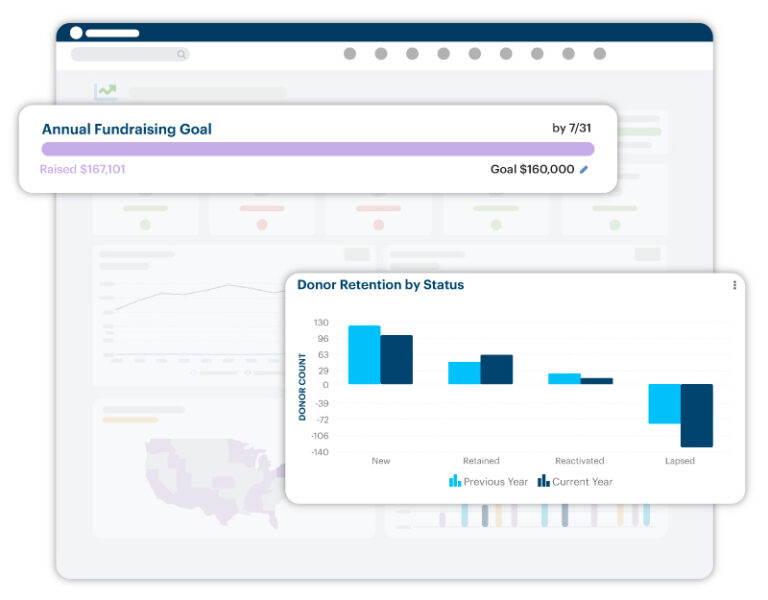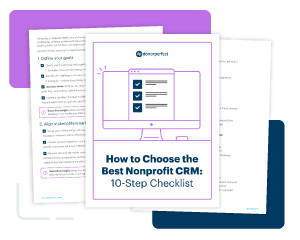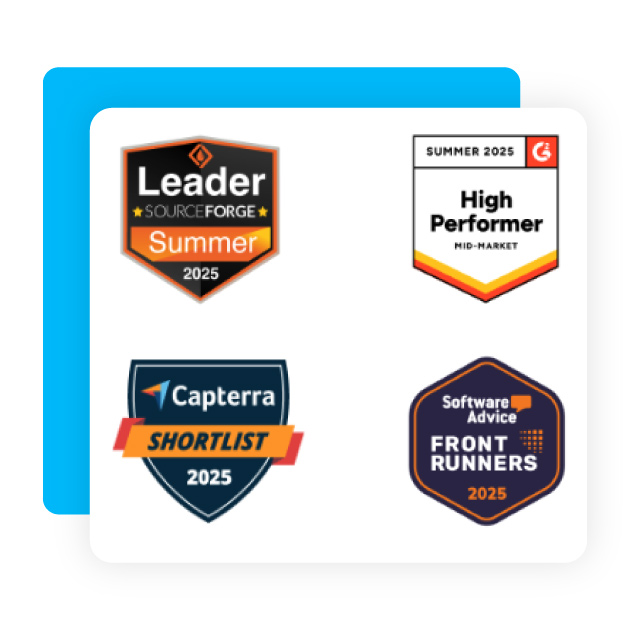Nonprofit Technology & Fundraising Blog
Subscribe to our mailing list

October 30, 2025 | Donor Data, Fundraising Operations
When you choose the best nonprofit CRM for your organization, it becomes the hub of your fundraising, communications, and accounting workflows. It connects your team members, keeps donor data clean, and allows you to see both the details and the big picture of your fundraising efforts.
But many nonprofits learn the hard way that selecting a CRM isn’t as simple as comparing a few demos and picking the least expensive option. A hasty decision can lead to frustrated staff, data that doesn’t quite line up, or a costly migration just a few years down the road. A well-researched choice will serve you now and when your revenue grows.
Here are some of the most common mistakes nonprofits make when selecting a CRM, and of course, how to avoid them in your decision process.
It’s natural for nonprofit leaders to keep costs top of mind. When budgets are tight, every dollar must be justified. But while affordability matters, price should never be the only deciding factor, as it rarely reflects the true value of a nonprofit CRM.
Development leaders, in particular, know how costly inefficiency can be. A system that can’t generate clean campaign reports or provide clear retention insights forces your staff to rely on manual workarounds or external tools. At best, those temporary fixes steal time from the real work of cultivating donors, stewarding relationships, and leading strategy. At worst, you could end up paying for another migration once your needs outgrow the system.
The best investment is one that pays dividends in efficiency and insight. Instead of comparing sticker prices, evaluate value over time.
Ask how the CRM will:
Reasonable pricing plans, when scalable to your needs, support steady growth. For example, DonorPerfect offers pricing tiers that let organizations pay only for what they need now, while still having access to advanced features as they grow. And on average, nonprofits see a 25% increase in giving in their first year with DonorPerfect.

A nonprofit CRM can look flawless in a sales demo, but fall short in daily use. Many nonprofits make the mistake of choosing a system without involving the people who will actually use it — development directors, gift officers, admins, and even volunteers.
When these staff members are left out, two things happen:
By including staff who will rely on the system every day, you get a clearer view of its strengths and weaknesses. Build a small cross-functional team with voices from development, accounting, and communications. They can test usability, surface needs leadership might overlook, and become advocates for adoption later on.
Need help involving your team? Download your free 10-step checklist, How to Choose the Best Nonprofit CRM, for executive advice!

Many organizations make the mistake of selecting a system that fits their current donor base yet limits their future growth. A nonprofit CRM should not only solve today’s pain points, but also anticipate tomorrow’s goals.
Development leaders often face this reality first. As campaigns expand and donor pipelines mature, the need for advanced segmentation, major gift tracking, and predictive analytics becomes non-negotiable. Choose a nonprofit CRM that can adapt as your data, campaigns, and reporting needs evolve.
Before making a decision, ask your vendor questions like:
As a Development Director, I went into the CRM search convinced no system could meet my long list of needs. Our organization has been around for more than 20 years, with processes that might not make sense to anyone else. But DonorPerfect never looked at me sideways for asking such specific things—they became a true partner, ready to translate our unique needs into real, usable fields.”
– Julia Gackenbach, Nonprofit Advocate & former Development Director
Data migration is often where good CRMs go bad, because accuracy isn’t optional. If gifts, pledges, or donor histories don’t transfer correctly, your staff’s confidence will erode before the new system even launches, and eventually, your development team will struggle to forecast trends and plan campaigns.
Make sure your nonprofit CRM partner will:
The best nonprofit CRM partner will invest in your team’s confidence as much as in your data’s accuracy. As you begin to use a new system, ongoing education is critical. Whether through webinars, help centers, or user communities, consistent support helps staff become efficient CRM users.
DonorPerfect is top-rated for its dedicated support staff, providing on-demand training webinars, live classes, and a customer Knowledgebase to help nonprofits make the most of their investment, long after go-live.

Having guided thousands of nonprofits through this transition, we’ve learned that choosing a nonprofit CRM is more than a software decision. It’s a strategic choice that touches fundraising, accounting, communications, and leadership.
Here are a few key takeaways:
By evaluating systems for long-term value, involving staff from the start, planning for growth, and paying close attention to implementation, you can raise more for your mission. Your team does great things, and they deserve a central hub that connects departments, unifies data, and provides the insights needed to make smart decisions.
1. What is the biggest mistake nonprofits make when choosing a CRM?
2. Who should be involved in the nonprofit CRM selection process?
3. How can nonprofits ensure their CRM is scalable?
4. What should nonprofits ask about data migration?
5. How important is training after implementation?
How to Choose the Best Nonprofit CRM
Follow us on social!